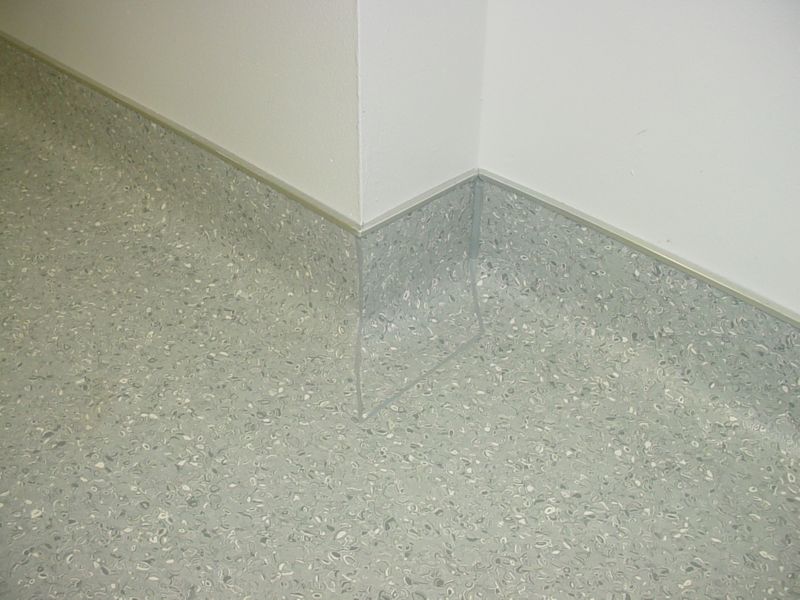Think how technology has changed your business. Has your staff passed a tablet around to present a video, website or PowerPoint? Did a client record video on their Smartphone that can only be viewed on a 4″ phone screen? Has everyone crowded around the phone using FaceTime or Skype to talk to a client? No, you say? They would, or they will, if you properly outfit your conference room multimedia during construction.
Multimedia adorned conference rooms are nothing new. Large corporate board rooms are generally outfitted with a video screen, in-table connections, a DVD player, WebCams, Smart Boards and teleconferencing equipment with wireless mics and overhead speakers. These rooms are so cool that firms are installing relatively inexpensive 70″ flat screens that are turning the office into the focal point for NBA Finals and Super Bowl parties.
Smaller firms, though, shun installing this technology claiming DVDs are rarely played; conference calls can be done on a Polycom telephone and a Smart Board may be cost-prohibitive. But think how beneficial it would be to hook up your tablet, Smartphone or laptop to a plug in your conference room table to stream video, presentations, websites and documents on a large flat-screen monitor for everyone to collaborate. Think how clients would benefit from this technology during a sales presentation.
Tenant’s in the real estate marketplace rarely consider the importance of the connected conference room planning during the design and construction phase because they are too focused with space planning and furniture costs. Management, though, should consider how devices used in our daily lives such as tablet PC’s and smartphones have become mainstream in the office and how preparing to display the new technology in their new meeting room can enhance their meeting experience. While they may not see the immediate need to spend for technology, steps should be taken to prepare for the future.
Remember, once the walls are closed, the carpet laid and furniture is ordered, retrofitting the room afterwards can be very costly. It’s the same logic when running Ethernet cables – it’s cheaper to perform during construction. If you are relocating but don’t have an immediate need for technology, consider some simple pre-construction steps to prepare your conference room for the future. This is by no means an exhaustive or complete list but a starting point to discuss with your project manager and design team.
1. Add wood blocking in the wall to support a future monitor bracket. Performing this task negates the need to open the wall in the future.
2. Install electric in the wall about 66″ AFF (above finished floor) to provide power behind the monitor and ancillary equipment like a webcam.
3. Install electric at standard AFF below the monitor.
4. Run at least two (2) 2″ conduits and floor boxes from behind the monitor to the floor below the leg of the conference room table for future tabletop phone, data and multimedia connections. A floor chop may be required.
5. Run an electric quadbox to the floor below the leg of the conference room table to power devices. Items 4 and 5 prevent tripping hazards from wires running across the floor to wall jacks.
6. Pre-run multiple data connections from your IT room to the conference room ceiling with a lot of slack.
Performing these preliminary tasks will ensure you have the necessary components for a future connected conference room.
Discover more from Helping NYC & Long Island Commercial Tenants, Owners, and Developers
Subscribe to get the latest posts sent to your email.






According to my opinion meeting space are very important space in our office. In your office meetings you can use teleconferencing tools, such as Skype, for important face-to-face meetings with clients, and avoid the carbon footprint nightmare of long-distance travel. Thanks for sharing.
Melbourne Meeting Rooms
It’s clear that tablets and other type of technology are the wave of the future. Although, I cannot get away with not putting projectors in some of my Directors or VP’s office just yet, we are making progress towards LED monitors/TV’s for their use. I relish the day when an iPad is hooked up to the TV & we can make more changes on the fly then after the meetings. I think a raised flooring in office space will help to provide more agility and flexibility to adapt to the newer technology.
We stopped putting overhead projectors into most collaborative spaces or Sr Leaders offices and it’s been a major cost avoidance. We no longer need to replace costly projector bulbs, send them out for repair or PM them. The TV’s just hang on the wall, are as inexpensive as the overhead projectors and last for years. We also have spaces where we have two different monitors side by side and it allows staff to compare spreadsheets, data, code, etc. Even small firms can afford the monitors and mounts available today.
Indeed George, and Rich. Our clients are always extremely impressed with our technologically advanced meetings. We included all of your suggestions when constructing the new office and it has certainly paid off. The clients have an increased respect and admiration for their architects, a heightened sense of control and stability in their projects, as well as a more exciting experience incidentally because of all the technology surrounding them. There’s no question that these initiatives pay for themselves many times over….and quickly. It’s not difficult to understand how much more easily it is to refer a firm possessing and implementing these technologies than one who does not. Not only do these decisions improve the overall image of the company…but also makes our jobs, particularly presentations and negotiations a lot smoother. Not to mention entertaining. Good post!
I agree: well said, Rich.
Successful implementation of such high-tech projects frequently depend more on low-tech things like conduit feeds, power outlets and network jacks than on the magical gizmos pouring out of Silicon Valley!
My firm provides planning, design and project management services for multimedia communications technology systems in corporate environments. Our services are most often provided as part of the design team within a new tenant fitout or renovation project, and they almost always come as an afterthought to the other design disciplines involved in such projects. Retrofitting a space for the proper integration of technology after the walls, ceilings and floors are closed is at least an order of magnitude more expensive than doing it up front during the base-building work.
However, there are some new and innovative products on the market that make it easier to retrofit signal connectivity while maintaining a professional environment free of tripping hazards, including large-capacity electrical poke-throughs and low-profile surface mounted raceways. There are also some new in-furniture products that make it easier to manage the tangled rats-nest of cables that often results from having a connected conference room. The key is to put the technology where the users need to have it: close at hand when it’s in use without being in the way when it’s not.
It’s a brave new world out there, but it’s not all that scary if you take a methodical approach and look at the deisgn from the users’ perspective instead of the techno-geek’s perspective.
Best Regards,
Rob
Rob-
I’d be interested to know what technology you find helpful. For instance, at a recent project the waffle floor construction prohibited us from installing 2″ conduits and we were limted to 1″ which made it impossible to snake a VGA wire with a connector attached. We overcame the issue with RapidRun cable and flying leads. It’s amazing and overcame our problem by snaking this 1/2″ diameter cable and screwing in a lead on the end that had VGA, mini, RCA (L/R audio and video) and USB connectors. The second wire housed the HDMI. What a project saver!
Hi, Richard.
Cable pathways are not usually a problem for us, as the installation contractors with whom we work will almost always use bulk cable that they terminate in the field; consequently, the largest conduit we ever need to specify is 1-1/4″ diameter. The RapidRun cable strikes me as cost-prohibitive for the large-scale projects on which we work, but it looks like it worked well for you; honestly, I had never even heard of it prior to your mentioning it. When we REALLY get in a bind for conduit capacity, we’ll convert the signal onto unshielded twisted pair and transport it over CAT5 cabling.
The items we find most useful are things like large capacity poke-throughs from that accommodate the Extron AAP/MAAP termination plates, the in-wall termination and connection boxes from companies like Peerless and Chief that go behind flat-panel monitor mounts and allow today’s ultra-thin monitors to sit flush against the wall, and table pop-up units like Extron’s Cable Cubby that allow the interconnection cables to be ready when needed but not in the way or creating clutter when not.
I’d be happy to spend some one-on-one time with you if you have any specific applications that need solutions.
Best Regards,
Rob
Well covered Rich. The newer workforce generation is coming from a wired, mobile and video enriched college environment where multimedia is the norm not the exception. Companies that adapt to this environment can expect a higher level of productivity and social engagement from this group, whether they be employees, vendors or customers. Making your boardroom available for the virtual technologies that exist and are coming will provide a company a competitive edge in attracting talent, retaining talent, reaching new clients and enhancing the customer experience.